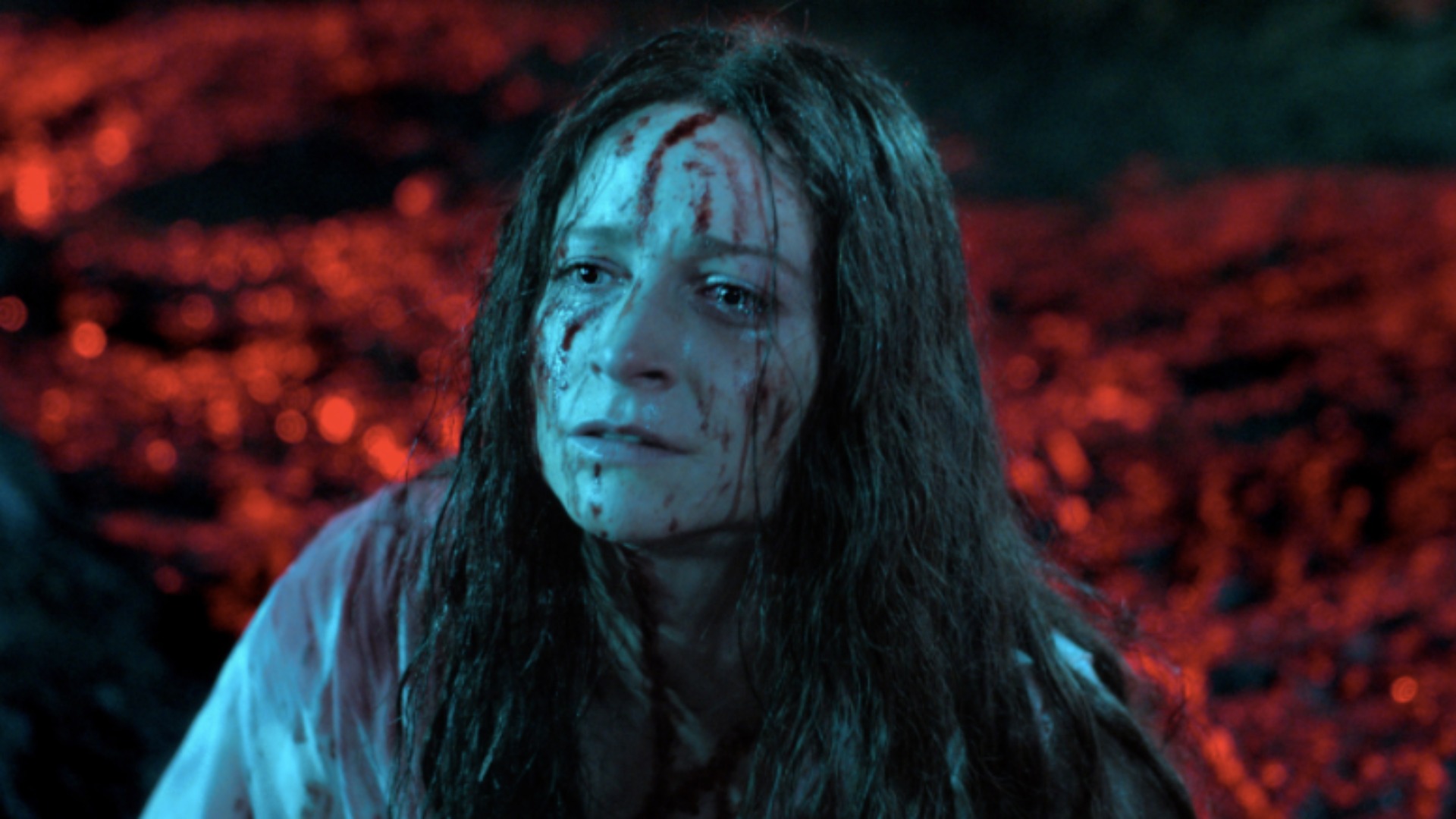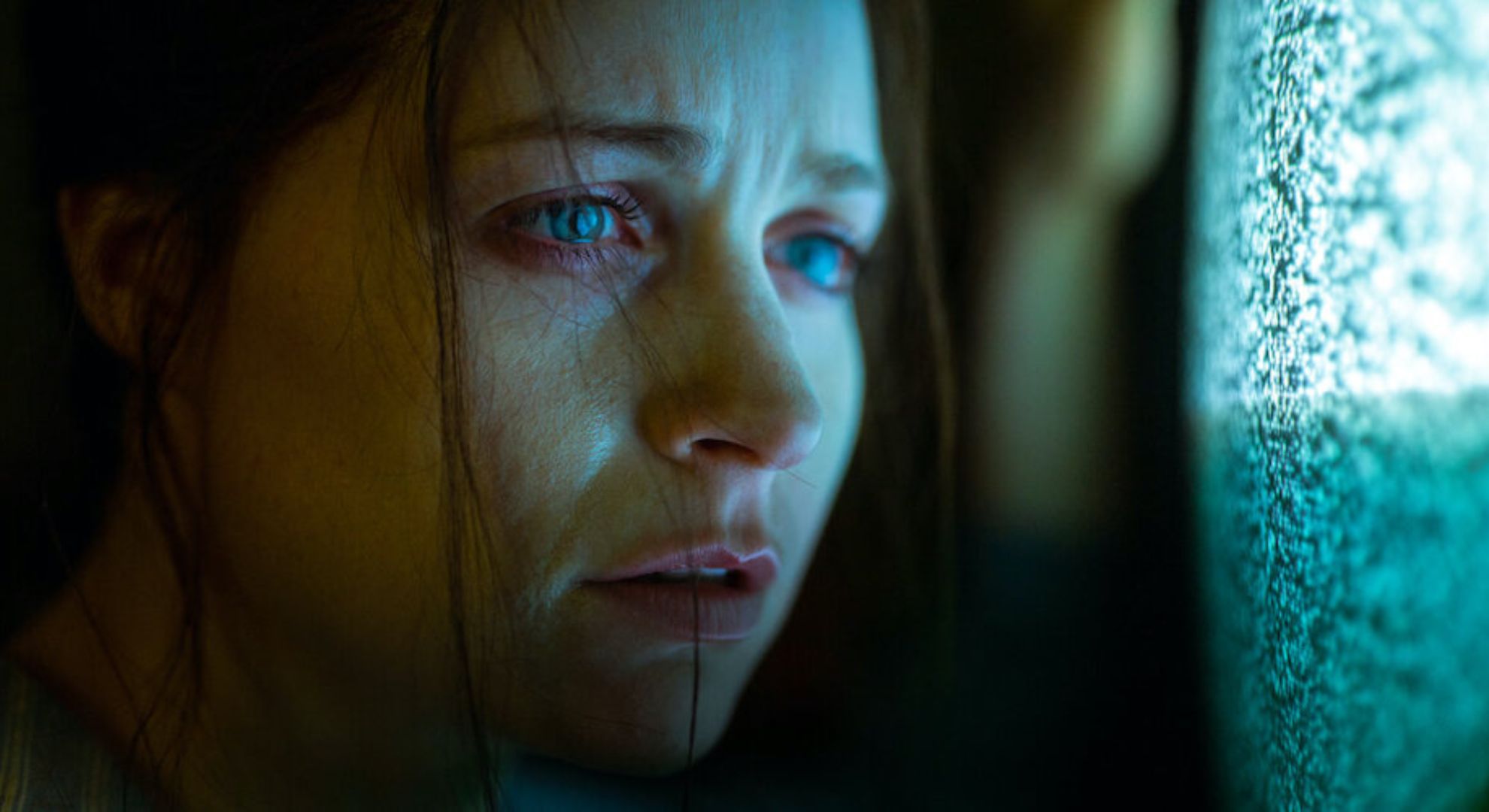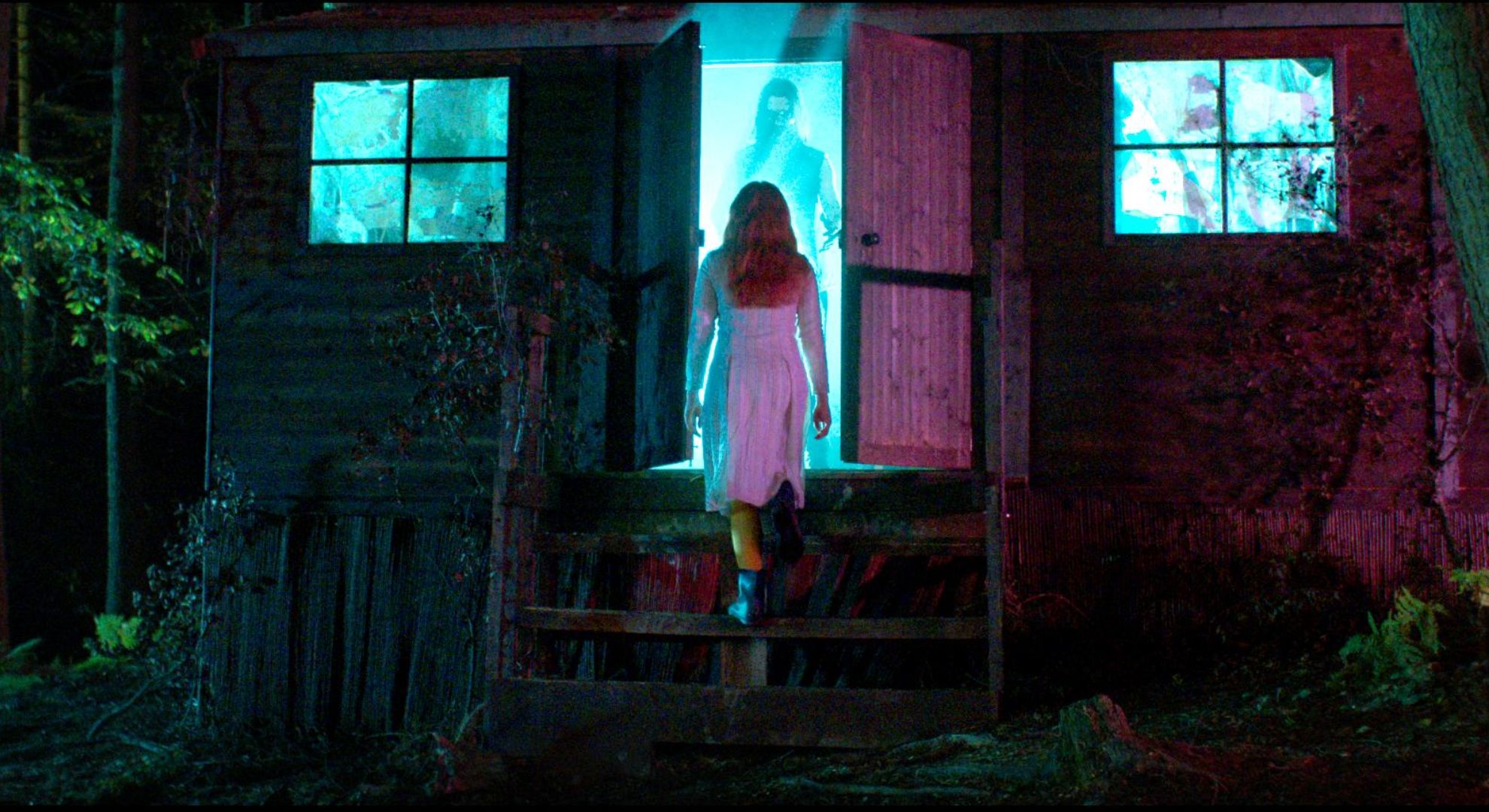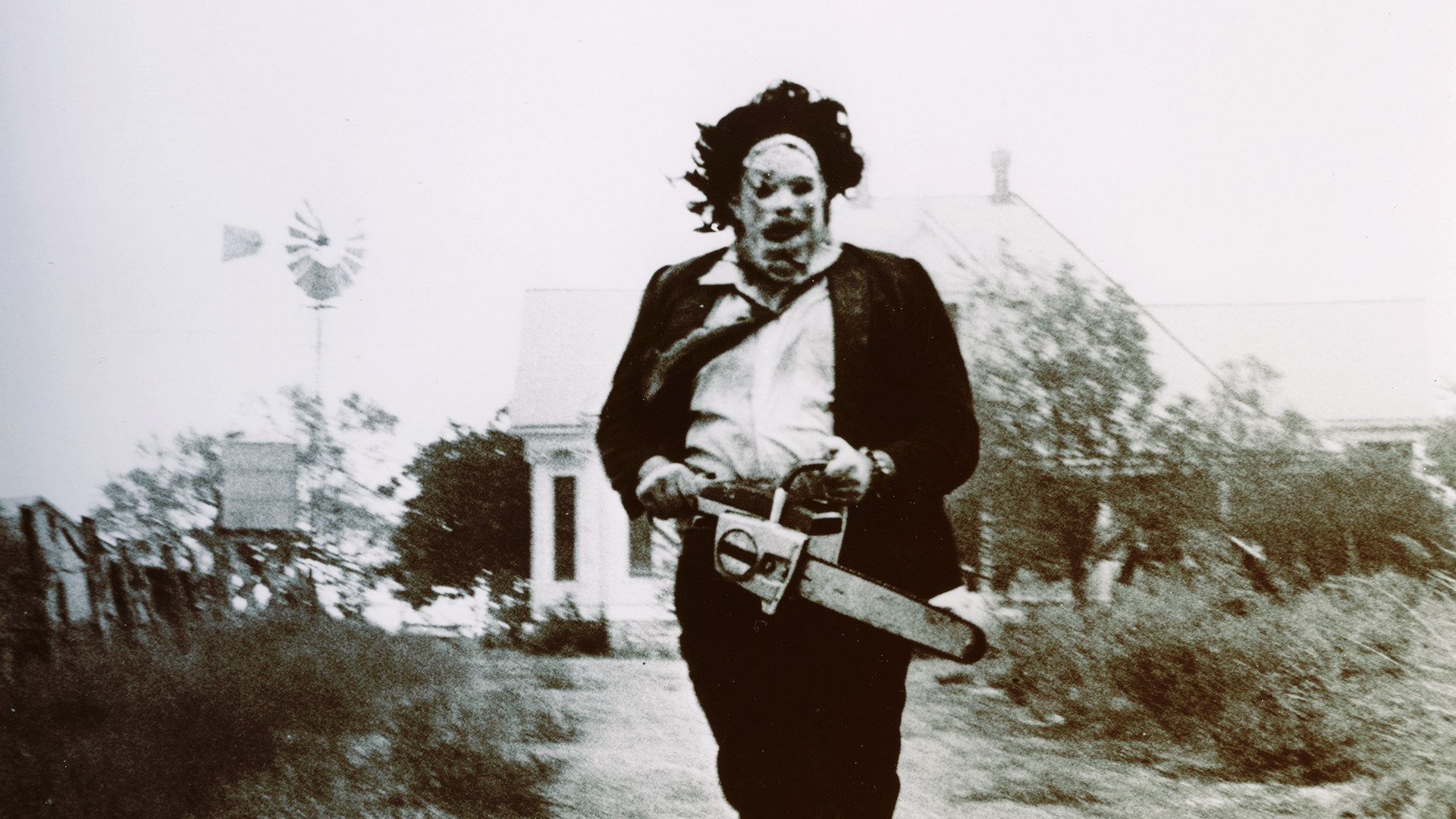Censor: The return of the video nasty
A film examiner suspects foul play in video nasties-era horror Censor. We talk to director Prano Bailey-Bond about her feature debut

"Ban video sadism now!" screamed the cover of the Daily Mail in July 1983, at the height of the furor over so-called "video nasties". With home video in its early days, not subject to any official control, enterprising independent labels coined it in distributing low-budget horror films using the twin draws of gruesome gore and lurid cover art.
The ensuing moral panic saw a total of 72 films at one time or another deemed liable to contravene the Obscene Publications Act, and placed on a list by the Director of Public Prosecutions, putting them at risk of seizure by the police. In 1984, legislation was passed requiring all videos to be officially certified.
Censor takes place the following year, when the British Board of Film Classification became responsible for awarding those certificates. It centers on one of the examiners tasked with the job: Enid (Niamh Algar), whose tragic backstory makes her especially concerned about the possible effects of screen violence. The initial spark for first-time director/ co-writer Prano Bailey-Bond related to horror of an earlier era, though.
"I was reading this article about Hammer horror," Bailey-Bond tells SFX. "It said that during that period, censors would cut images of blood on the breasts of a woman because they believed it would make men likely to commit rape. I was like, ‘I’m sure there were lots of male film censors. If this actually is what these images do to us, what protects the film censor from losing control of themselves?’
"It was quite a childish thought, and it grew from there, really. I quickly placed the film in the video nasty era, because what was going on in the UK during that period spoke to this idea perfectly," she adds.
Though Bailey-Bond always had a full-length feature in mind, she tested out the idea first in 2015’s Nasty, a 15-minute short about a 12-year-old boy whose nasties-watching father has mysteriously vanished. "That allowed me to create the world of the film: this idea of taking a character from grey, bleak, suburban ’80s Britain into this colorful, vibrant, gory world of video nasties. I was trying out a lot of the ideas I was exploring for Censor. But also there were ideas from Nasty where I went, ‘Oh, this works’ – like the idea of a family member going missing."
In Censor, Enid is haunted by her sister’s childhood disappearance, and gradually becomes obsessively convinced that it’s connected to the trashy oeuvre of horror director Frederick North.
Sign up to the SFX Newsletter
Get sneak previews, exclusive competitions and details of special events each month!
Cutting Crew

Bailey-Bond did her homework when it came to Enid’s job, beginning by speaking to current examiners with a knowledge of the period, and booking out BBFC files on the nasties. "Anybody can do that: you can book to go and read the file for The Texas Chain Saw Massacre and see what they were saying, which is a lot of fun! Even just being in the BBFC helped. The fact that lots of their offices are in the basement, and they’re pokey little rooms that don’t have windows, all fed into the creative – wanting to make this space feel quite claustrophobic."
Bailey-Bond also tracked down a couple of examiners from the ’80s and interviewed them about their former occupation. "One said it felt very seedy sometimes, sitting in these dark rooms watching essentially soft porn. She’d leave work feeling a bit grubby.
"Other examiners told me that they had to watch these films both with a subjective brain and an objective brain. So you’re watching things in duality; you’re trying to recognize how it’s making you feel, but also how it might make this person feel, which is a strange way to watch a film."
Horror fans who lived through the ’80s – or the following decade, when the nasties debacle was still casting a long shadow – may still hold a negative view of the BBFC, an organization personified for some in the figure of James Ferman. It was Ferman, BBFC Director from 1975-1999, who made sure The Exorcist wasn’t given a home video certificate, arguing (with paternalistic logic) that it might find its way into the hands of impressionable girls. Enid, however, is portrayed in a sympathetic way –and Bailey-Bond has sympathy for her real-life counterparts.
"I know people who work as film censors who love horror," she says, "and I think it’s more complex than someone just sitting in a room cutting. It was definitely more complex than that during this period, and they disagreed on things a lot of the time as well. Then you’d have to come to a group decision on what’s right and what’s wrong, and it’s all very subjective, ultimately. I think it’s important for us all to try and understand the person who maybe is on the other side of what we agree with,” she adds. “That happens less and less now, doesn’t it?"
Bailey-Bond also went square-eyed watching the nasties themselves. The results of this accumulated research were then channeled to Niamh Algar, at the time working in Cape Town shooting the Ridley Scott series Raised By Wolves.

"I was sending her lots of films and saying, ‘Watch this!’; sending her essays on censorship, and people losing family members,” Bailey-Bond says. "Then introducing her to the film examiners that I’d spoken to, so she could get more of a sense of the role that Enid had. We had quite a few months before we shot the film where Niamh and I would just jump on Skype, about once a week. It was about making sure that we were both on the same page, working through the script psychologically, and then pouring more ideas into it.
"We talked a lot about Enid’s physicality," she continues, providing one example of this collaborative process. "In my head, I’d always imagined her being very controlled at the front of the film; then, as the film goes on, she’s unraveling both in her head and physically/ visually. So we worked together with a movement director, and we talked about different things. Niamh’s idea was this picking of the fingernail [as a nervous habit]. I really loved that. So I included that in the script and my shot lists."
The heroine’s mental unraveling means that we’re presented not only with sequences from films by the fictional Frederick North, but with Enid’s nasties-inflected dreams, awash with the kind of red/blue lighting popular in Italian horror of the time. Bailey-Bond had great fun with both, drawing on the films she’d watched for inspiration.
"For Don’t Go In The Church, I was looking at Lisa, Lisa, or Axe – it’s got two titles. Blood On Satan’s Claw was another really useful one – those kinds of folk horror-esque, eerie British films of the ’70s. Then for Asunder, Lucio Fulci was a big influence – I love Fulci, his aesthetic is wonderful. The House By The Cemetery and The Beyond were things I was showing my director of photography. Then the dreams were a little bit more Dario Argento-inspired."
When it came to the wider world of ’80s Britain, Bailey-Bond’s search for a suitable location took in Wales and London, and eventually led north. "We were looking for somewhere that could pass for the ’80s, and we found some really great places in Leeds. So we all moved up and lived there for about three months when we were shooting."

The best horror movies of all time
Bailey-Bond also took pains to ensure this wasn’t some artificial, day-glo world of deely-boppers and legwarmers. "I was looking more at [documentary photographer] Paul Graham – stuff that was a bit more like tired Thatcher’s Britain, and the grey-blue palettes of that world. And when I was talking to my production designer and costume person we always thought about period as: not everything comes from the ’80s. My house now isn’t full of stuff that I just bought yesterday.
"So you’re always looking at clothes and things in the space that are more ’70s or ’60s. It’s a challenge, on a low budget. You can’t just chuck any old thing in, because you’re thinking, ‘Well, did they have Biros like that in 1985?’ You’re questioning everything! But I love that, because you can design everything."
But the bigger challenge, she says, was the initial one of making the case that the mid–’80s setting was absolutely fundamental. "In development, I had to really justify to the execs why the film’s set during this period. People would say, ‘Well, it’s about censorship. Why can’t you just make it about now?’. But for me it’s so interesting to be able to look at this in hindsight – somehow you can be more objective about it.
"Also, this is a period of particular hysteria around this stuff within the UK, that
birthed the horror community that we know now, and inspired so many filmmakers, and I think shifted horror slightly because of the birth of VHS."
It’s a period you’ll shortly be able to immerse yourself in – and without having to ask the bloke at the video rental shop to slip you “some of the hard stuff ”, inside a big-box case, concealed in a brown paper bag. As the tagline of The Last House On The Left put it, keep repeating: it’s only a movie, only a movie, only a movie...
This article originally appeared in SFX Magazine – the issue with The Tomorrow War on the cover. Order through that link, or subscribe here and never miss another exclusive feature.
Ian Berriman has been working for SFX – the world's leading sci-fi, fantasy and horror magazine – since March 2002. He's also a regular writer for Electronic Sound. Other publications he's contributed to include Total Film, When Saturday Comes, Retro Pop, Horrorville, and What DVD. A life-long Doctor Who fan, he's also a supporter of Hull City, and live-tweets along to BBC Four's Top Of The Pops repeats from his @TOTPFacts account.


